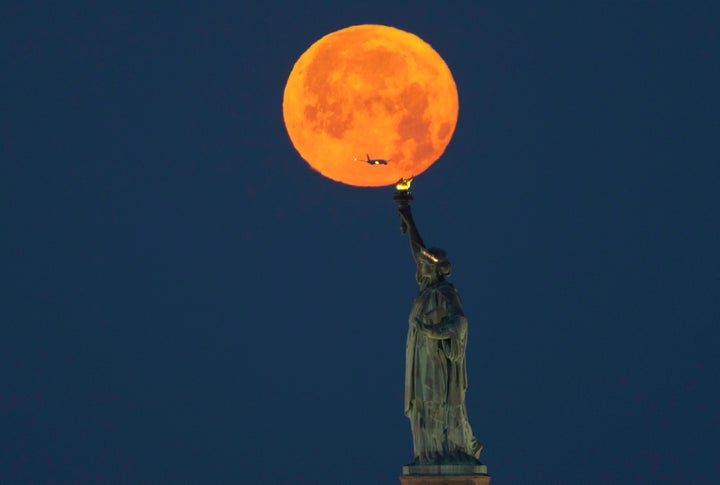
Nature showed off over the weekend by turning the full moon a deep orange colour on a clear night – and the photos are jaw-dropping.
It was the final full moon of 2023′s spring season (for the northern hemisphere anyway) and it was most visible before sunrise or just after sunset on Saturday.
For those in the northern hemisphere, it was one of the lowest-hanging full moons of the year, because it will soon be the summer solstice (June 21), which marks when the moon is at its lowest and the sun is at its highest.
The phenomenon is largely known as a Strawberry Moon because it aligns with when the fruit ripens, around the end of spring, even though it’s colour looks a bit like a slightly underripe berry. It’s a name which stems from Native American tribes who wanted to “mark the ripening of June-bearing strawberries that are ready to be gathered”, according to forecasting website, The Old Farmer’s Almanac.
But, NASA lists plenty of other names for it, too, such as the Mead or Honey Moon, as that’s when mead was made. It may also be the origins for the word honeymoon as it coincides with the medieval marriage season.
It’s also been called the Rose Moon, for the flowers that bloom around this type, while those who follow Hinduism call the moon and its three day appearance Vat Purnima. It marks a time of year where women try to demonstrate their love for their husbands by “tying a ceremonial thread around a banyan tree,” according to NASA.
This weekend’s appearance was particularly special though, because people across North America, Europe, Africa, Asia and Australia were able to see the brightest star in the Scorpius constellation as well, called Antares. It was visible just to the right of the moon.
And – to make it even more an event – at dusk on Saturday, Venus and Mars appeared as well, just to the west of the moon.
If you missed it, don’t worry. The next full moon will be on the first four super moons of the year. Known as the Buck Moon, it’s set to pop up on July 3 – so keep your eyes peeled.
In the meantime, feast your eyes on some of the most iconic images of the natural phenomenon which were shared on Twitter.
Here’s what it looked like from the UK...
The phenomenon was also visible from Ireland...
...and New York...
And Washington State...
...and even further afield...
